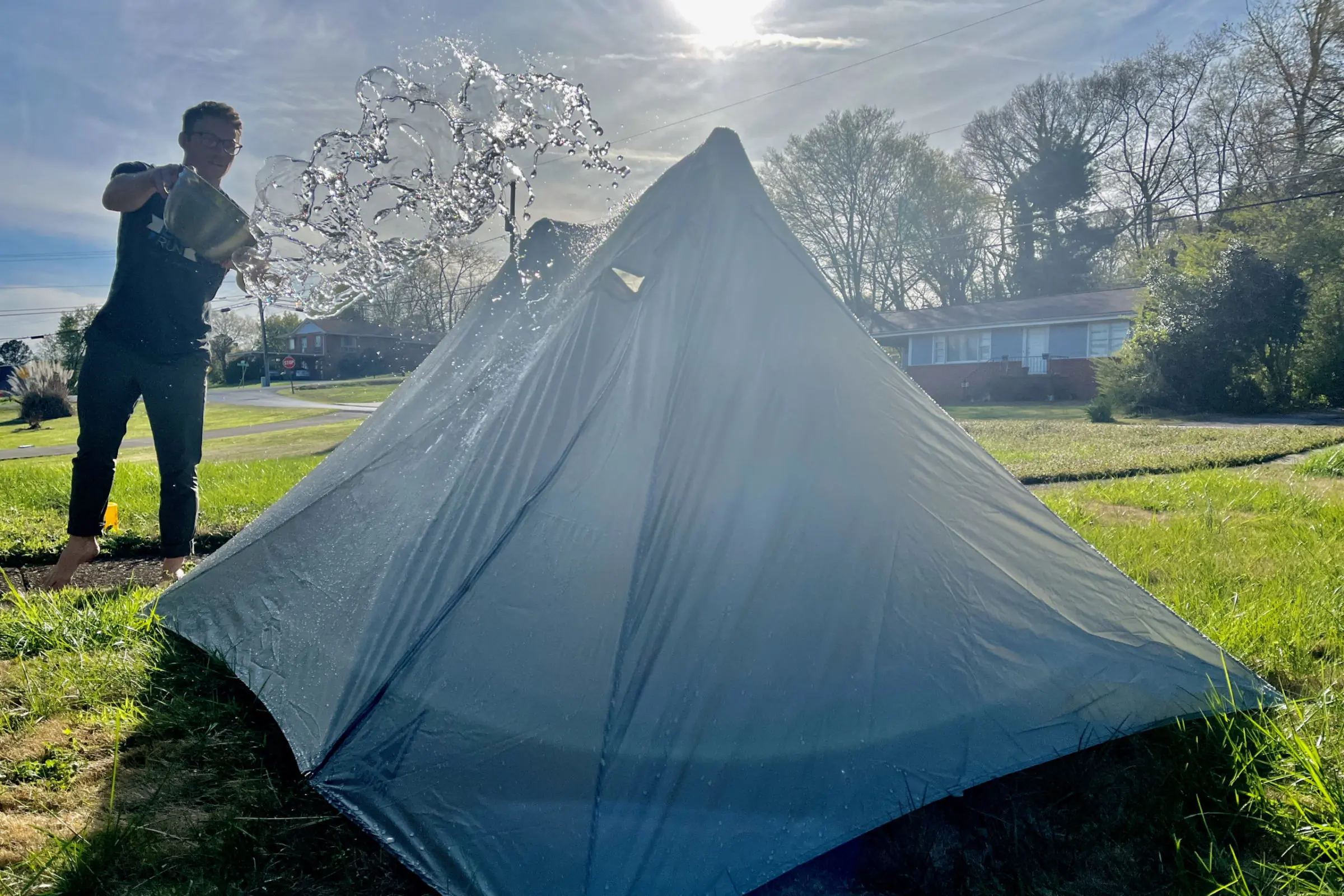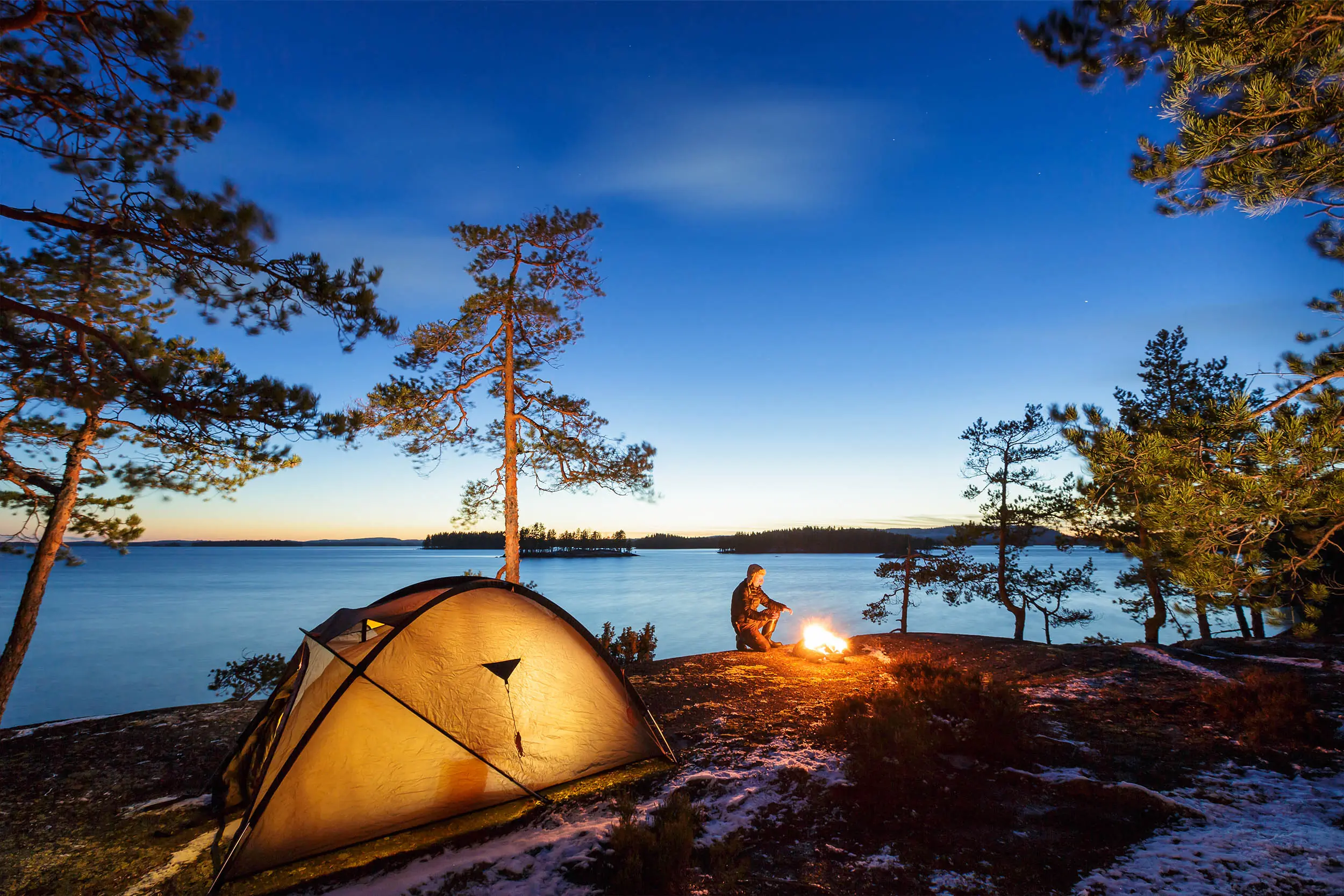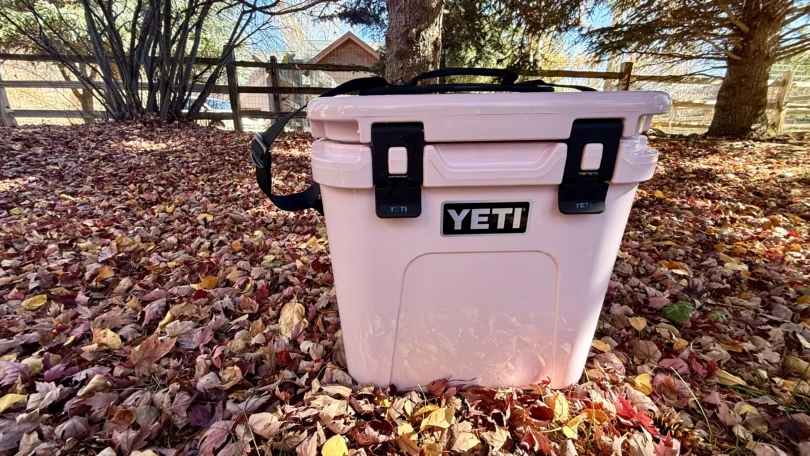Got some free time on your hands? Great! Anytime is the perfect time to rummage through your (carefully organized?) gear pile and start prepping all the camp goodies for the months of use ahead.
And nothing may be more crucial to a season of outdoor fun than your tent. Not only does it serve as a bedroom, living room, and dining room in the wild, but it also fends off relentless elements like rain, sun, wind, dirt, bugs, and more.
All those factors take their toll on your camp shelter. So, though you may not know it, a little TLC is in order. And you’ll be happy to know that maintenance — like patching holes or re-waterproofing your rainfly — is easier than you think.
Here are some simple at-home tips to give new life to your tent.
How to Clean Your Tent (and Footprint)
Cleaning is the best and easiest place to start your tent care. We spoke to the folks at NEMO and Nikwax for a few helpful tips on best practices.
First and foremost, read the tag on your tent for care instructions. Follow those guidelines first. Of course, this wouldn’t be much of an article if we just told you to read the tag. So we’ve got some extra pointers for you.

Regular Tent Cleaning
If you tend to take particularly good care of your gear, a wet cloth may be all you need. Wipe down your tent to get rid of any stowaway campsite hitchhikers like pine needles, ash, dirt, and the like. Keep an eye out for ticks and other bugs!
But if you’re more of a “heavy user” (aka, never wash your tent), you may need to pull out the big guns and use a little soap. “Over time, dirt, oils, detergents, and campfire smoke can inhibit your tent’s ability to shed water and breathe,” said Heidi Allen, Nikwax vice president of marketing.
“Breathable waterproof items like your tent come pre-treated with a DWR coating that prevents the absorption of water into the fabric. Dirt attracts water, while household detergents leave water-attracting (hydrophilic) residues, leading the fabric to ‘wet out’ in wet or damp conditions,” Allen continued.
A tent-specific soap like Nikwax’s Tent & Gear Solarwash revitalizes the DWR treatment while safely removing stubborn dirt. Also, don’t forget to clean your tent stakes while you’re at it!
The above advice about DWR treatments only applies to sil-nylon or sil-polyester shelters. The growing category of shelters made from Dyneema Composite Fabric (DCF) doesn’t use DWR treatments. Major brands like ZPacks and Hyperlight Mountain Gear recommend a gentle laundry detergent and warm water for handwashing their DCF shelters.
How to Re-Waterproof Your Tent

Once you’ve washed and dried your tent, spray some water on the fly and tent body. If it beads up, the DWR treatment is still good. If it soaks in, it’s time to give it some new life. Treat it with Tent & Gear Solarwash: Simply spray down the tent floor and rainfly, let them dry, and wipe off any excess. Again, this advice does not apply to DCF shelters.
Seal the Seams
Have you noticed water leaking through the seams? No worries, resealing is a cinch. Note: Check with your tent’s manufacturer to verify whether your tent fabric uses a silicone treatment or a polyurethane coating. This will determine which seam-sealer you use.
Lay out your rainfly or tent and check the seams on the underside and inside. If you see a spot where the sealant is peeling away, gently remove any flaking sections. Clean the area with some rubbing alcohol.

To reseal, use the appropriate sealant. Gear Aid has great options for both urethane-coated and silicone-treated materials. Apply the sealant as necessary and let it dry before packing away the tent.
How to Patch a Hole in Your Tent
Easy peasy! Products like Gear Aid Tenacious Tape tackle tears and pokes like a pro. And it’s basically idiot-proof. Use a little rubbing alcohol to clear around the breach, cut the tape or patch to fit the hole, and then stick it on. Presto!
This is a case where using a DCF shelter over sil-nylon or sil-poly is a real advantage, as most repair tapes (including duct tape!) stick far better on DCF than more typical shelter materials.
Check Your Zippers

It’s never a bad idea to clean off your tent’s (or sleeping bag’s) zippers to keep them running smoothly. In fact, zippers are one of the most common failure points in shelters — it’s because excessive dirt and dust will kill a zipper in a matter of weeks. To prevent this, take an old toothbrush to the zipper teeth to remove any debris.
If it’s still stubborn, try some zipper lubricant (Gear Aid has one of these, too). You can also grease up a zipper by running a standard graphite pencil along the zipper teeth.
If the zipper track is broken or the pull won’t close the zipper, you may need to contact the manufacturer — especially if the tent is under warranty.
Now that you’ve done the basics, you’ve got one more job: Put everything back! This is a great opportunity not only to maintain everything but also to inventory your tent setup.
And once everything’s clean and dry, pack it away (poles, too!). As soon as the camping bug hits, you’ll be good to go.
Frequently Asked Questions: How to Clean a Tent




How do you clean mold and mildew off a tent?
You didn’t dry your tent when you got home, did you? And it’s just been sitting in your closet, developing all sorts of weird smells only a true outdoors person can ignore. Don’t fret, you can refresh your tent before sharing it with anyone else.
“Try mixing a gallon of hot water with one cup of lemon juice and one cup of salt,” NEMO rep Kate Ketschek told us. “You can use a spray bottle and soft sponge to apply the mixture and gently rub it into the tent. Allow it to dry and then use warm water to rinse.”
How do you wash a tent in the washing machine?
One word: don’t! The agitators tear the fabric. Even in front loaders, we wouldn’t risk it. Hand wash your tent as described above, and then line-dry it. Or just set it up in your yard. When doing this, try to keep it out of direct sunlight as much as possible, as the UV rays will harm the fabric over time.
How do you use vinegar to clean a tent?
You’d do this for the same reason you’d use the lemon juice/hot water/salt mixture; odors associated with mold and mildew. Like that recipe provided by NEMO, we’d recommend a fairly watered-down solution if going the vinegar route — perhaps half a cup of vinegar to 1 gallon of water.
And make sure you leave plenty of time for your tent to dry and air out; it’s gonna need it so you don’t smell like a pickle!









